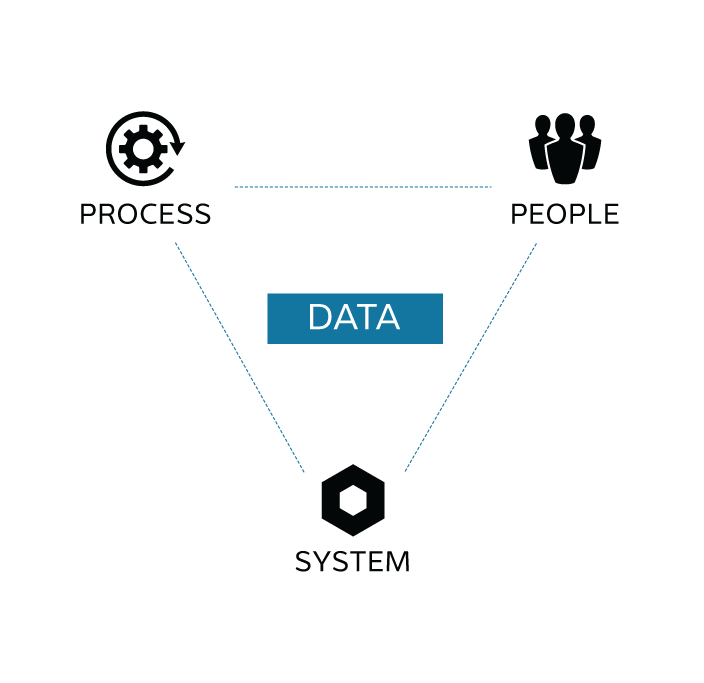Why Do Companies Need Data Governance?
Data governance helps protect a company’s most important assets: knowledge and data. This in turn has an impact on decision-making, risk mitigation, and brand identity.
In this first of two articles we focus on the benefits and cost of data governance. In the second article we explain leading practices for data governance and recommendations how to start.
To get a pulse on the consumer packaged goods (CPG) industry, Kalypso sent questionnaires and interviewed clients about their data management practices, specifically around the role of the data custodian. The sample from US and European clients is too small to draw any significant statistical conclusions, but the findings are directional enough to be of interest and to share.
Leading companies in the CPG industry are focused on better managing product information in order to maintain high quality standards, meet shorter time to market cycles, and improve decision making about their products. The importance of data management is emphasized by one of our clients, who instead of calling it product data management, calls it knowledge management.
The CPG industry is adopting tools to help manage the massive amount of information about the products they develop and market. These include ERP systems on the transactional side, and product lifecycle management (PLM) systems on the iterative, product development side. PLM systems are the next generation of product data management (PDM) tools that had their heyday in the last century.

Implementing a PLM system costs hundreds of thousands (even millions) depending on the complexity of the company. A product data model must be configured and then filled with data from legacy systems. This data needs to be cleaned before migration. Companies who have implemented PLM know that data transformation is the single most time and resource consuming step during implementation. They also realize that maintaining the quality of the data in the new system is a responsibility that requires a governance that extends beyond users. “Quality data is the key to any advancement,” states Arkady Maydanchik in his book Data Quality Assessment.
In the graphic to the right, data plays a central role. Data integrity is a direct function of how people follow the process and use a system to ensure the highest quality data. When people, process, or system fail, bad data is the result.
This is why the data custodian role is so important. This role is responsible for assuring data integrity. The responsibility of the data custodian “…is the willingness to be accountable for a set of business information for the well-being of the larger organization.”[1]
Key Benefits of Data Governance
- Improved decision making. The best decisions are based on both experience and facts. Too few facts, or worse, unreliable data will result in a low quality decision. These decisions can be reactive (for example, in the case of a recall) or proactive (in the case of a strategy decision). As one global client puts it: “If R&D publishes the wrong data, downstream will hurt.”
- Improved risk mitigation. Good data helps companies better manage risk in the public domain: risk where the food comes from, what’s in it, how it is prepared, and the nature of the ingredients. When a company has reliable information, it will be able to better manage risk.
- Improved brand protection. Improved data quality means improved product quality. Data quality has a direct impact on brand reputation.
To access these benefits, companies must:
- Establish ownership of maintaining and improving data and information integrity
- Bring together people, processes, and systems for optimal data integrity
The Cost of Data Governance
One of the companies we spoke with has an initiative to develop global excellence through global functions rather than local functions. This creates a challenge where actions in one function have an impact on other functions down the line. These bilateral actions are one of the main reasons why functions and systems need to be integrated. For example, customer development is now asking R&D for data that R&D does not have in its system, and supply chain needs data for planning purposes. The R&D system now needs to harbor data that it did not harbor before. There is a debate in supply chain: which function is responsible? Which system is responsible?
There are a couple of important costs to solving these issues.
Data governance means establishing new roles and responsibilities. There is a cost associated with developing the new organization. But as one food service client states, “The cost of not doing it is of such proportions that it is foolhardy not to take it on.”
Organizational change management. Companies that move to a data governance model often must break down a siloed organization that uses functional processes. The new way of working can be achieved only when processes are aligned among different functions. Investment in change management is extremely important.
In Summary
More and more, major companies view data governance as essential to better manage risk, to protect their brands and to improve their decision making. The adoption of data governance is faster in regulated industries, but even non-regulated industries like CPG see that benefits outweigh the costs of establishing data governance.
In the second article, we explain leading practices for data governance and recommendations how to start.
Kalypso acknowledges the data custodians of the clients who provided input and comments for this article.
Thank you.
Peter Block (quoted by Larry English – Improving Data Warehouse and Business Information Quality)


